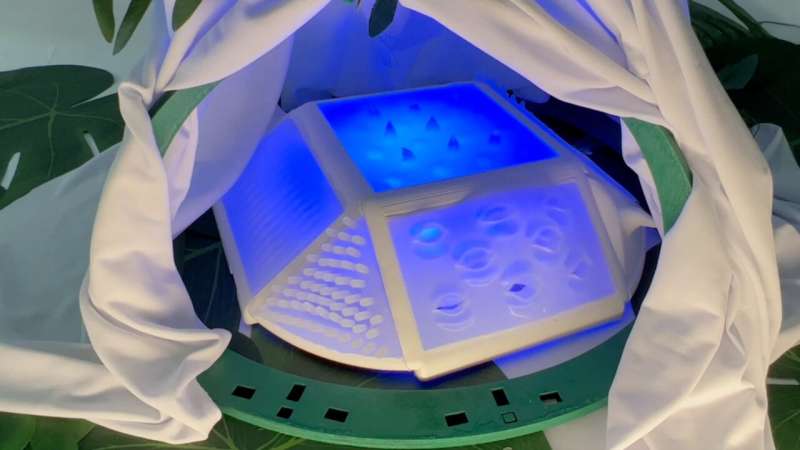This article has been reviewed according to Science X's editorial process and policies. Editors have highlighted the following attributes while ensuring the content's credibility:
fact-checked
proofread
Touchibo, a robot that fosters inclusion in education through touch

A team of researchers from the University of Lisbon and Cornell University has presented a touch-based robot that is capable of fostering inclusion in schools, giving equal opportunities to children with and without visual impairment to participate in a group activity with the robot. Their most recent study showed improved individual and group participation perception, which contributes to creating more inclusive learning environments.
The robot is called Touchibo and has been developed to improve group interactions between children with and without visual impairment, exploring the power of tactile interactions. "Touchibo aims to bridge the gap between children with diverse visual needs, promoting participation, empathy, and social engagement," said Isabel Neto, a researcher at the Gaips Lab at INESC-ID and the Interactive Technologies Institute.
The study involved 107 children, including 37 with visual impairments, who participated in a series of storytelling activities facilitated by Touchibo and an audio-only storyteller. Researchers analyzed the children's responses, touch behaviors, and group dynamics to evaluate the impact of touch-based interactions on social engagement and inclusivity.
"We have used a combination of video recordings, questionnaires, and observational data to capture the nuances of interpersonal touch behaviors, story comprehension, and group dynamics," added Isabel Neto.
Children who engaged with Touchibo exhibited a significantly increased perception of individual and group engagement compared to the interactions with the audio-only storyteller. "Touchibo not only promoted touch-based interactions between children but also enhanced the children's perception of the storyteller's likability and helpfulness, highlighting the robot's potential to enrich social interactions in classrooms with children with mixed-visual abilities."
Furthermore, the study shed light on the importance of touch in promoting inclusion and engagement among children with diverse visual abilities. By creating a multisensory storytelling environment, Touchibo facilitated meaningful interactions, fostering a sense of belongingness and mutual understanding among the participants and promoting inclusion and mutual understanding among children with diverse visual needs.
The findings of this research pave the way for innovative approaches to creating inclusive learning environments for children with mixed visual abilities by demonstrating the power of touch-based robots in promoting social interactions and inclusion. This study was presented this March and published as part of the Proceedings of the 2024 ACM/IEEE International Conference on Human-Robot Interaction.
More information: Isabel Neto et al, "I'm Not Touching You. It's The Robot!": Inclusion Through A Touch-Based Robot Among Mixed-Visual Ability Children, Proceedings of the 2024 ACM/IEEE International Conference on Human-Robot Interaction (2024). DOI: 10.1145/3610977.3634992
Provided by Associate Laboratory of Robotics and Engineering Systems (LARSyS)





















